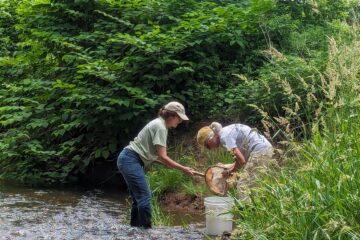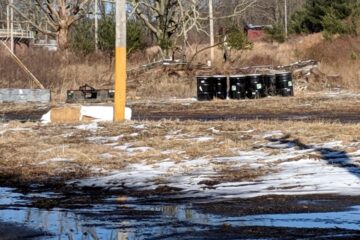Site Description
Site ID: NR01
Raritan Township, Hunterdon County
Stream Category: FW2-NT (Category 2, Non-trout waters)
Site monitors First Neshanic River subwatershed (HUC: 02030105030010)
The site is located upstream of the confluence with the Second Neshanic River, after the First Neshanic River passes under Route 202/31. Park on the left side of the road after the bridge.
What is being monitored at this site?
- Biological and Visual Assessments (?)
- Chemical Testing (?)
- Bacteria Monitoring






